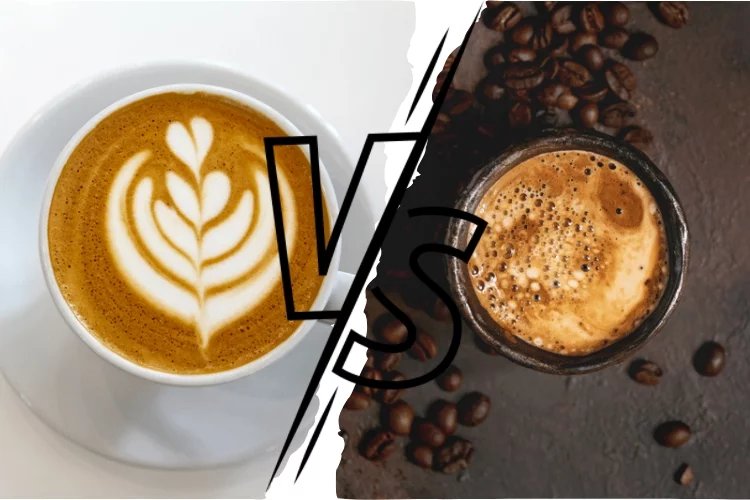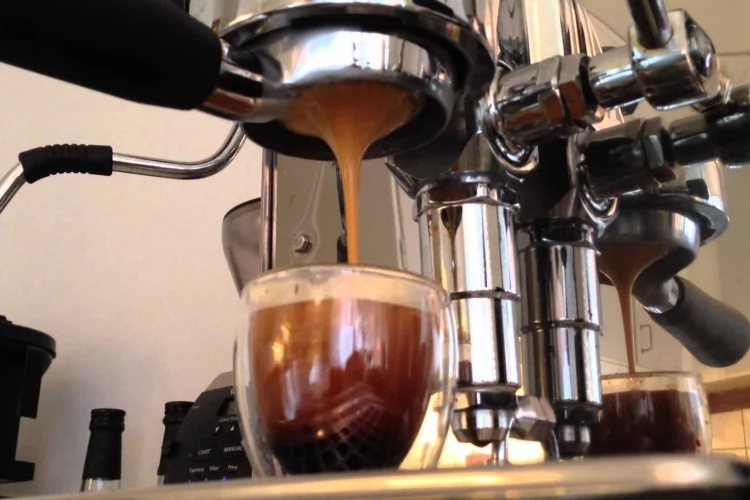Espresso Vs Coffee
by Jeanette Kierstead
The word "coffee" comes from the Arabic word, "kaweh". It means strength and vigor. We are all aware that coffee is very popular worldwide. You can't pass a local café anywhere without inhaling the intoxicating coffee aromas.
The lure seems to be all around us. Half of Americans over the age of 18 drink coffee every day, and the Quichua farmer from the Napo province in the Amazon Rainforest in South America are now growing coffee to sell at markets in Ecuador.
Next to oil, coffee is the #1 most popular commodity on the planet. People drink coffee in many creative ways, but this article will focus on Drip coffee vs Espresso.

Drip Coffee
Drip coffee was first made in Ethiopia, Africa, in the 9th century AD. It is almost black in color and its texture is light. It is usually poured from a simple drip coffee maker easily and quickly, into an 8 ounce cup. The cups can be ceramic, which will keep the coffee hot longer, than a porcelain or paper cup. But it is only 8 ounces, so it won't take long to drink, unless you want to savor it. Sip away slowly and enjoy every drop.

The grounds are medium coarse and measured according to brew pot size. Paper filters are common and placed in a brew basket. Be careful because they might filter out a lot of the important flavors. The water temperature is 200 degrees F. and pulsing action and gravity cause the drip to happen.
The coffee will stay hot for hours in the pot if it is well contained, and is very convenient at home, at the cafe, or in the workplace.
A cup of drip coffee has 40 mg of caffeine and no calories or fats. Each cup contains 2 mg of sodium. The 49 mg of potassium in this drip coffee cup should help you with your electrolyte count, meaning that it helps to conduct electrical charges in the body.
The eight ounce cup of coffee also has 3 mg of magnesium for you, which is required for energy production in your body, just to name a few rich mineral deposits in coffee.
Drip coffee is basically pouring hot water over ground coffee beans which are sitting in a filter. Depending on how you create this "black gold", the result can be either delicious or not for human consumption.
Espresso
Espresso coffee is much different. It has been around since the 16 th century AD, and first made its appearance on the Arabian Peninsula. The color of espresso in your very small cup or "shot" can be quite dynamic! It might resemble an abstract painting.
They don't refer to it as a shot for nothing. Take a quick look into the cup to appreciate it, and then don't take too long to drink it because it does cool off fast due to its smaller size.

The preparation of espresso is much more complicated than the drip coffee. Very hot water is being forced under pressure through a blend of fine grounds, and every detail must be perfectly measured so that the final drink has flavors and chemicals blended to the ultimate balance. The dark roasted grounds, the hot water, the pressure at around 40 lbs., and the tamped puck of coffee resting nicely in a portafilter container have all passed inspection.
It takes about 20 seconds for the water to pass through the coffee and drizzle into the cup emerging as very smooth. creamy, caramel colored liquid, with flavors from sweet to bitter. Voila! The 3 levels of heavenly espresso, including the crema on top and full body in the form of one ounce, awaits you.
The 212 mg of caffeine, the 9 calories, the 0.1 g of fat, and sodium, magnesium, iron, vitamin C, and the carbs, are blended to perfection and presented to you in a tiny little cup. Drink up!
Oh wait! Maybe you would like to create a cafe latte with one part espresso and 2 parts steamed milk. Or, does a cafe mocha sound more appealing with its espresso, steamed milk, and chocolate? Some people prefer a cafe romano which adds a twist of lemon to the espresso.
Winner?
So who wins? Does the populace enjoy a regular cup of hot black drip brewed coffee with maybe a little cream and sugar? Or, is the complicated well crafted espresso the winner?
There seems to be people out there who add large quantities of hot water to an espresso and call it an Americano. Many prefer to exploit the espresso with large quantities of milk and call it a Capuccino. Finally, there is a certain coffee cult who mix espresso with whatever is close by and then they name it after their grandmother. And some people just like a plain cup of deep black joe, with or without cream and sugar. The jury is in and it turns out that we all win, so long as the beverage is fresh and well prepared.
Cheers to all the coffee and espresso fans out there in the world!
Please don't forget to visit the rest of our site, with many more coffee related articles, information, and reviews. Click our logo below to return to our Home Page!
 |
 |
 |
 |

About Jeanette Kierstead
Jeanette has been testing and reviewing kitchen appliances for over six years now, so she knows her stuff when it comes to finding the best ones. In her spare time, she loves nothing more than baking cakes and cookies – especially if she can do so with one of her favorite stand mixers! When she's not in the kitchen, Jeanette is usually looking after everything homes-related; from garden tools to smart home products.
Thoughts on "Espresso Vs Coffee"
 |
 |
 |
 |
Get FREE Coffee Gifts now. Or latest free grinders from our best collections.
Disable Ad block to get all the secrets. Once done, hit any button below
 |
 |
 |
 |